Learning to write about IELTS Bar Charts
Before learning how to describe bar charts in IELTS Task 1, it would be useful for you to study these articles first.
If you are familiar with the content, you can continue to the next section.
IELTS TASK 1 Describing changes and trends
IELTS TASK 1 Working correctly with numbers
IELTS TASK 1 Increase your band score with Adjectives/Adverbs
IELTS TASK 1 Using Compare and Contrast language
Bar charts usually have two main features that you need to notice – the comparison of two or more units or numbers in the same year, or charts that show changes over a period of time
For this type of essay it is standard to write a four paragraph essay, namely An Introduction, An Overview and Two Bodies
Have a look at these articles if you are unsure about the paragraphs of an IELTS report.
Writing about Bar Charts
Bar charts are common questions in IELTS.
This format of question is very visual and can seem easy to answer.
This is often a mistake.
It is really important to be prepared for all types of IELTS questions. But, the good news is that the preparation won’t take as long as you might think.
There are different types of Bar Chart. All will require you to notice differences and trends.
In many ways the question is a similar task to Line Graphs except the information is presented in a different way.
Values may be presented as measurements, costs or numbers against units of time, cities, countries, months or types of people among others. A bar chart typically represents a period in the past.
It’s important to use specific vocabulary related to this task and the grammar needed here would be prepositions and the past tense to describe trends.
You would also need to use specific language that shows numbers and amount as well as the language required for Line Graphs.
Good News!
Bar Chart Questions follow the same format as any IELTS Task 1:
This is
- Introduce the map
- Give an overview of the main point/s (necessary for Band 6 and above)
- And provide the detail
This post will explain:
- The two types of Bar Chart question
- The tried and tested method for answering any map question
- How to write the introduction
- How to write about the detail showing trends and time.
- How to finish with a great overview
- The common mistakes IELTS students make
What is an IELTS bar Chart Question?
These questions can be divided into two types: past and present charts and show trends in one direction over time.
Official IELTS practice questions have featured information related to education, population, climate, exchange or school for example. In fact anything where the highest and lowest can be compared.
More good news is that the same skills and principles can be applied to any bar chart, whether in the past or present.
Let’s consider a typical question first.
The chart below shows the number of men and women in further education in Britain in three periods and whether they were studying full-time or part-time.
Summarise the information by selecting and reporting the main features, and make comparisons where relevant.
Write at least 150 words
A Good Teacher’s Guide to IELTS Planning.
Any good teacher will tell you that to be effective in Task 1 you need to understand the task quickly and plan an answer quickly too. You can do this like so:
Get an overall visual understanding of the map.
- Paraphrase the question
- Consider an overview
- Divide the process into past and present
- Include time to proofread your writing
Gaining an overall understanding of the Bar Chart
A bar chart has a number of features that require vocabulary related to time or number. So, you should start at the beginning, and look for and compare the obvious differences or trends.
In the example above, this differences are fairly obvious. Noticeable features are there were increases in enrollment for both men and women in full-time education and while there were increases in enrollment for women in part-time education this was not the same for men.
However, bar charts are not always as clear as this, and you may need to look more carefully to notice changes.
It’s quite a challenge to write about something you have never seen, so it is important that you look at other sample bar charts to get a good understanding of how they might vary.
Don’t worry, it doesn’t need to be perfect, you only have 15 minutes and just need to notice the main features and report them in an accurate way.
TOP TIPS for understanding
- Identify the obvious trend/s
- Is the trend increasing, decreasing or is it stable?
- Is the an exception to general trend?
- Is it past situation or present?
- Units are often about time, are they days, months, years or decades?
- If they are not about time, what are they?
- If there is a key, what information is provided on the bar chart?
By answering these questions you will have already started planning your essay
Good News – Remember the IELTS task is not there to trick you, and you won’t be given a complicated process to describe. Your task is to report effectively and accurately.
Top Tip
As with any Task 1, you can begin by paraphrasing sentence (1)
This is the rubric or instructions.
Paraphrasing is a task that is worth learning to do well, and a good knowledge of paraphrasing will also help you in the Reading, Listening and Speaking part of the test.
Simply put, paraphrasing for IELTS means using different words and/or word order so the original meaning remains the same.
In order to remain the same, different words need to be synonyms, so man, male and person have a similar meaning, they are synonymous, but man, male, person and girl are not all synonymous.
As you can see, all the information in the three sentences has been taken from the question, but it has not been copied.
Bad News
If you do copy directly then those words are not used towards the word count and you will fail on TASK ACHIEVEMENT.
You need to write it in your own words.
In any Academic Task 1 question you can rewrite (paraphrase) the questions and this will be the first paragraph. Excellent!
You can then move on further and consider the next section, the Overview.
Overview of the Bar Chart
The ‘public band descriptors’ state that to achieve a Band 6 or above for ‘task response’ the student must provide an overview in a Task 1. Without one, you are less likely to get a high score.
If you started planning at the beginning then writing a good overview will be a lot easier near the end.
Remember, the questions I asked you to consider. These should be sufficient to provide the 2 sentences you need to construct the basic overview.
Recap:
- Identify the obvious trend
- Is the trend increasing decreasing, stable?
- Is there an exception?
- How are units measured?
An IELTS bar chart is different to a chart or table as there aren’t usually any key differences to identify.
So, as there are no differences to comment on, you should mention, for example, the obvious trend/s AND exception if there is one.
Providing the Detail
Now that you have completed paraphrasing the question and given the overview, the next stage is to explain the IELTS bar chart in detail.
You can do this by:
- Stating the significant trends
- Use verbs and nouns to show an increase, decrease or exception.
- Use prepositions to describe time and trend
Before you do this you need to consider the most suitable language that reflects the sophistication of the task.
Consider the most suitable language
In order to describe the process well there are three key aspects of language to be considered. These are vocabulary, prepositions and choice of grammar.
- Key vocabulary for describing Bar Charts
Numbers and Amounts
Vocabulary to describe time
Vocabulary to describe changes over time
Trends that go up
Trends that go down
Language to describe no changes
Language to describe multiple changes
2) Structure for describing trends over time The Overview
When we describe change, the present perfect and the present perfect passive is often used. Also time phrases are used such as: over the 20 year period, from 1990 to 2000, over the years, in the last 10 years, in the years after 1990 and so on.
The Overview
The overview comes just after the introduction and makes a general statement about the main differences between the bar chart. The overview is quite short, maybe about 2 or 3 sentences. Do not go into detail in the overview.
Now I can add the two Body Paragraphs using the language and vocabulary from above.
The Body Paragraphs
Varying your language for Task 1
One final tip for a higher score is variation in language.
It’s a good idea to avoid repetition when writing Task 1.
Example
According to the information, the production of cars doubled.
According to the chart, twice as many cars were produced.
Sales increased to. Sales went up to.
The same can apply to nouns too,
For example, the number of cars produced, the total production of cars.
Common errors
A very basic error seen in Task 1 introduction is basic verb agreement.
Look at the two genuine examples below
The bar chart show
The bar charts shows
In both examples it is unclear about the number of nouns discussed
Here is the correction:
- Make sure you practise the passive so you know exactly how to use it.
Common errors using the Present Simple Passive
You will see from the description, it is more unusual to comment on who or what is doing the action so the ‘by….” phrase is often excluded.
- Singular or Plural
Notice these examples are incorrect.
There were an increase in rainfall.
There was a declines in visitors.
The number of sales gone up.
This is a really common mistake In Task 1 writing!
Here are the corrections:
There was an increase in rainfall.
There was a decline in visitors.
The number of sales has gone down.
Finally, check your Essay
Ideally, you need to allow 3 to 4 minutes at the end of the test to check and improve your writing. Often students don’t do this because they spend 2o minutes writing, but it is far better to write for about 15 minutes and allow 5 minutes to check and improve your writing.
From my experience the points you should check for are:
- Are there any obvious spelling or punctuation errors?
- Are the verbs the correct tense?
Additionally, you should consider these questions, but if you followed my planning advice you should be ok.
- Do the verbs agree with the subject?
- Does the description make sense? Does it follow the visual?
- Is there any repetition in vocabulary?
- Could this be improved with synonyms?
- Have I written over 150 words?
- Have I organised the text into at least 3 paragraphs?
- Have I noticed only the obvious features from the map?
- Have I included the prominent features in the overview?
- Have I NOT included my personal opinion?
Once you have done this, be proud of the final product!
Here’s my sample answer.
What do you think?
Sample Answer Adult Education Bar Chart
The bar chart presents information on male and female full and part-time enrolment in further education at the beginning of three decades, 1970, 1980 and 1990.
Overall, it is noticeable that the number of people in both full and part-time education increased over the three periods. In addition, the numbers of women increased more sharply resulting in the number of women in some form of education outnumbering men by 1990.
In 1970, there were 1 million men in part-time education. This figure dropped to around 875,00 in 1980 before rising slightly to 900,00 in 1990. Noticeably, the numbers of men in full-time education consistently increased from 100,000 in 1970 to 200,000 by 1990.
As for women, there were roughly 700,000 in part-time education in 1970, this then grew to 800,000 in 1980 and then jumped sharply to 1.1 million in 1990. In comparison, part-time education enrolment increased sharply from below 100,000 in 1970 to 200,000 in 1980 and then increased very little by 1990. With respect to part-time education overall, the number of men declined while it increased for women.
Word count (180)
Official Band Score Examples Task 1
If you’d like to see official examples of student’s work you can do so here.
All the Best, Jonathan
I’m Jonathan
I’ve taught IELTS and University English in more than a dozen universities and schools around the world.
I’m a parent, traveller and passionate about language teaching and helping students achieve their dreams.
Whilst living in Austria or working in Asia, I run IELTS courses to help students get to where they want to be.
If you are serious about IELTS, connect with me to see how I can help you.

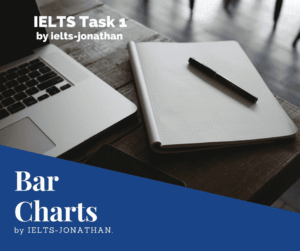
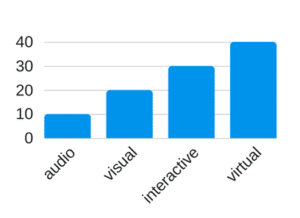
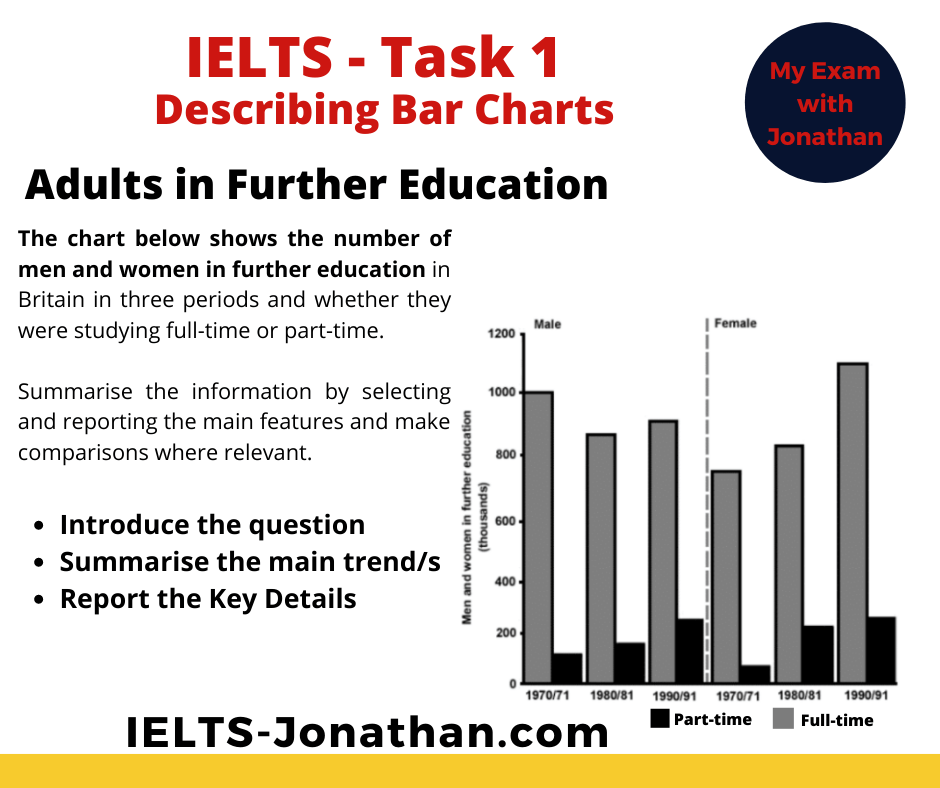
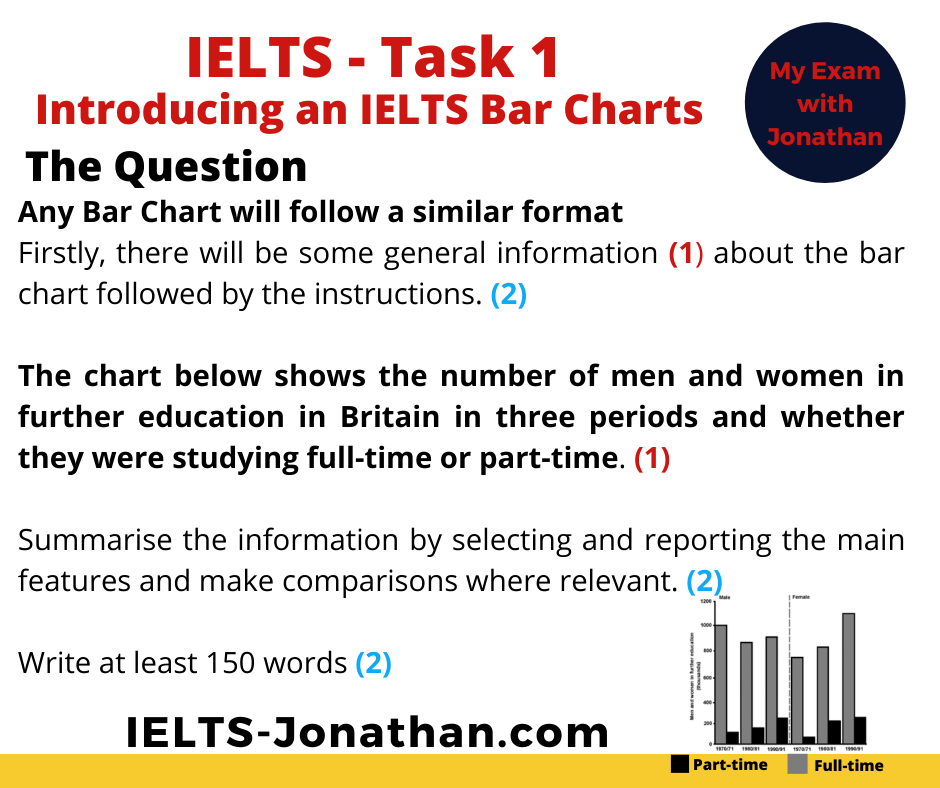
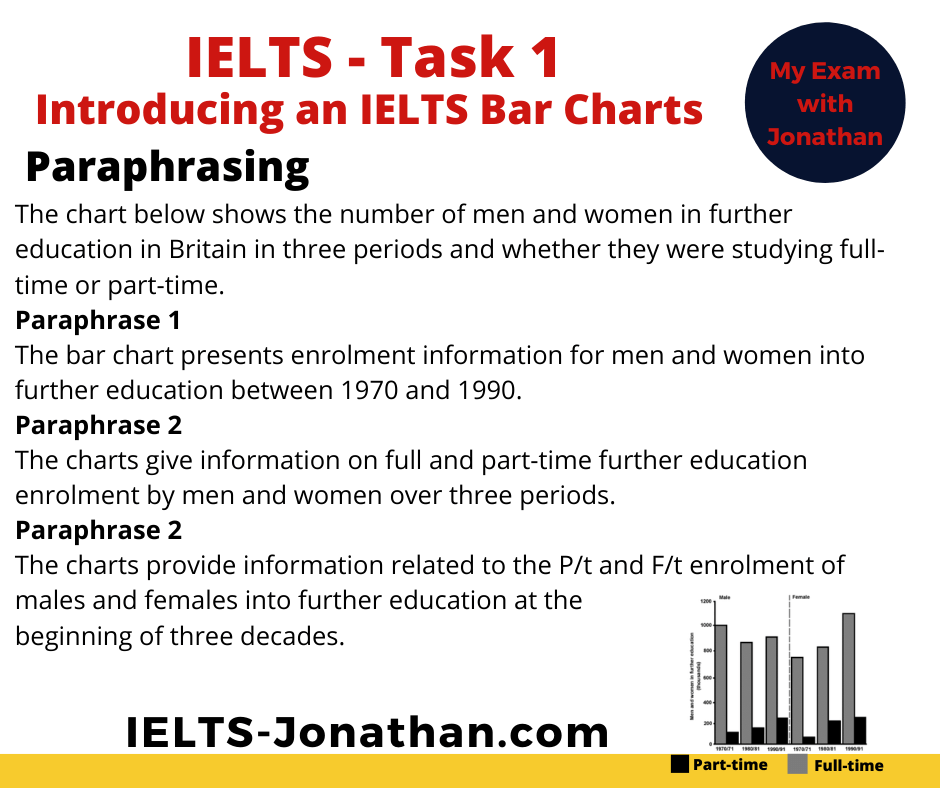

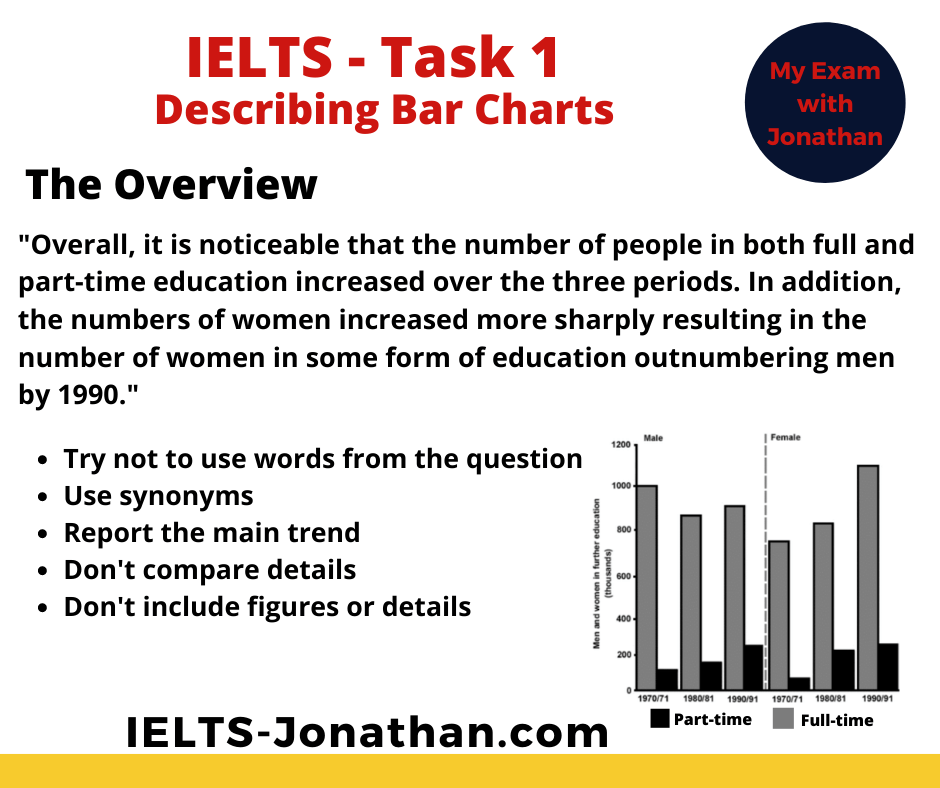


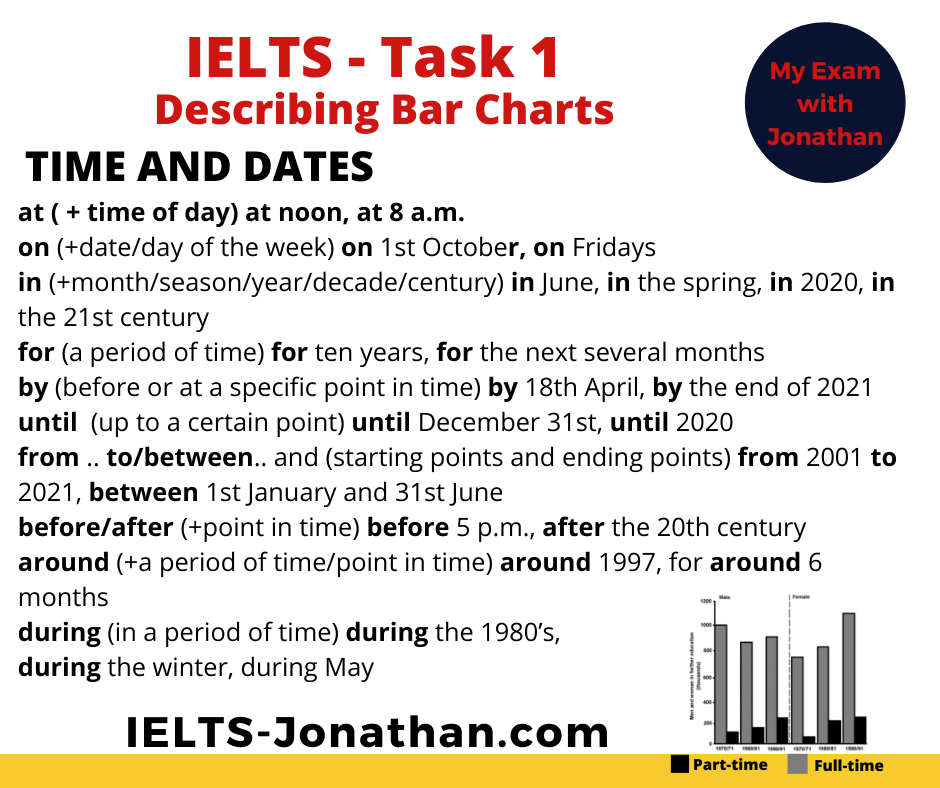
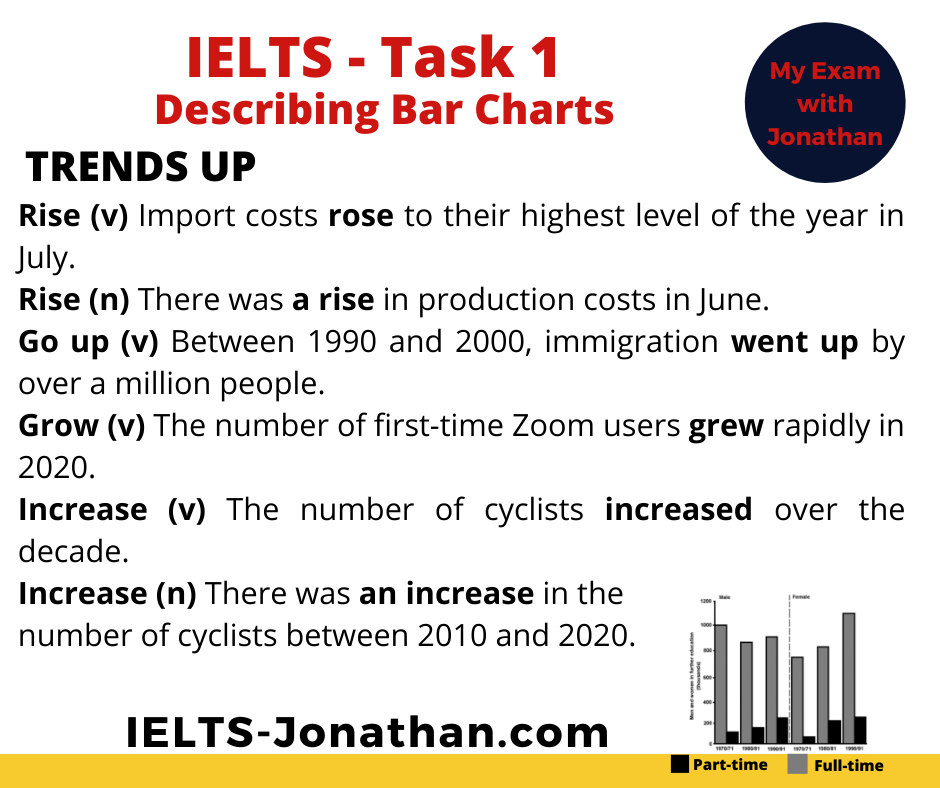
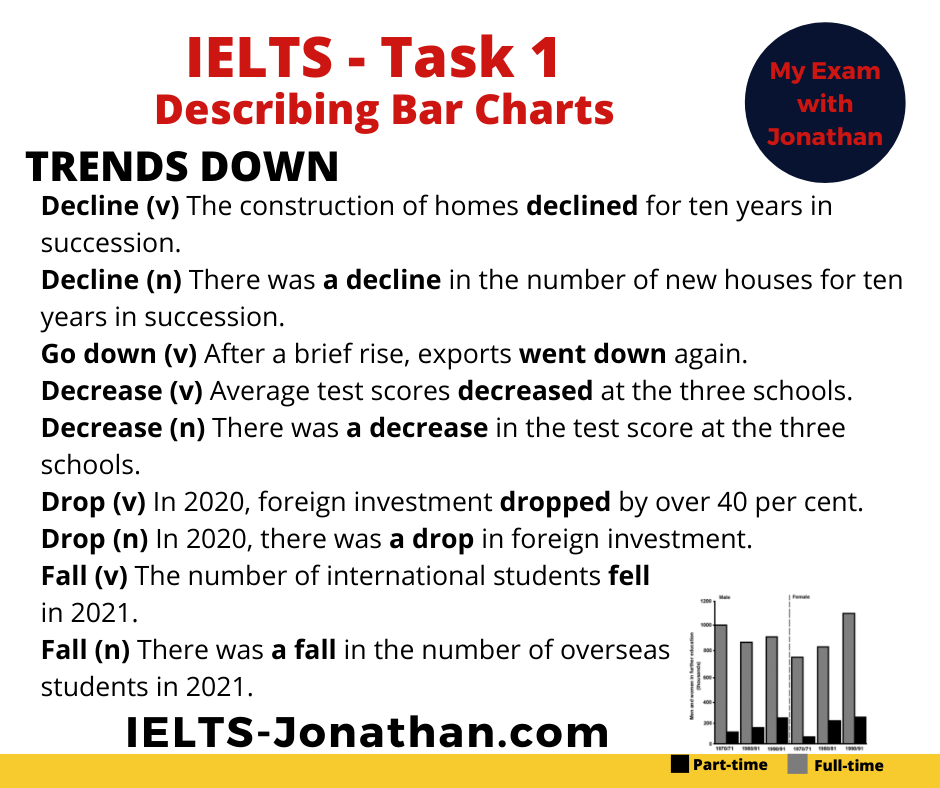
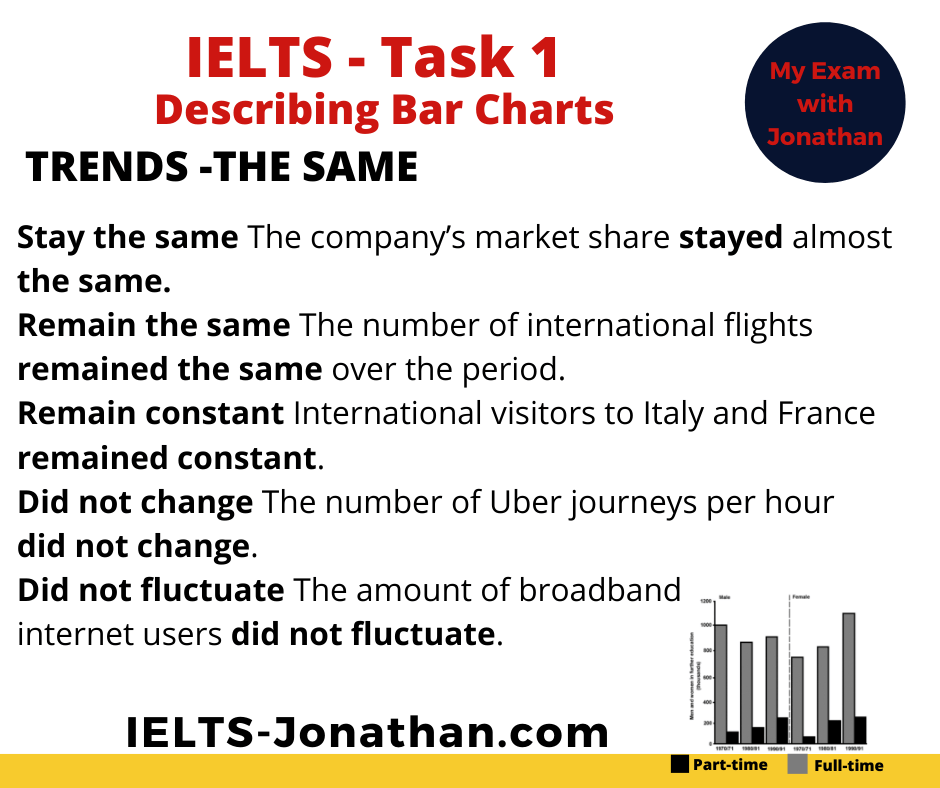
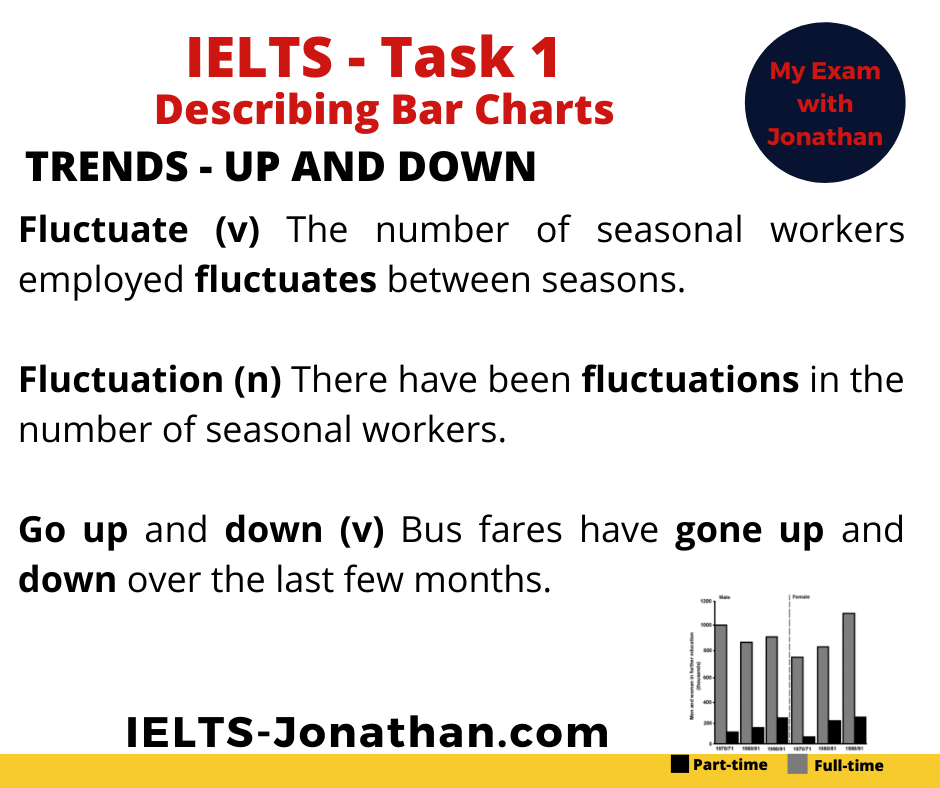
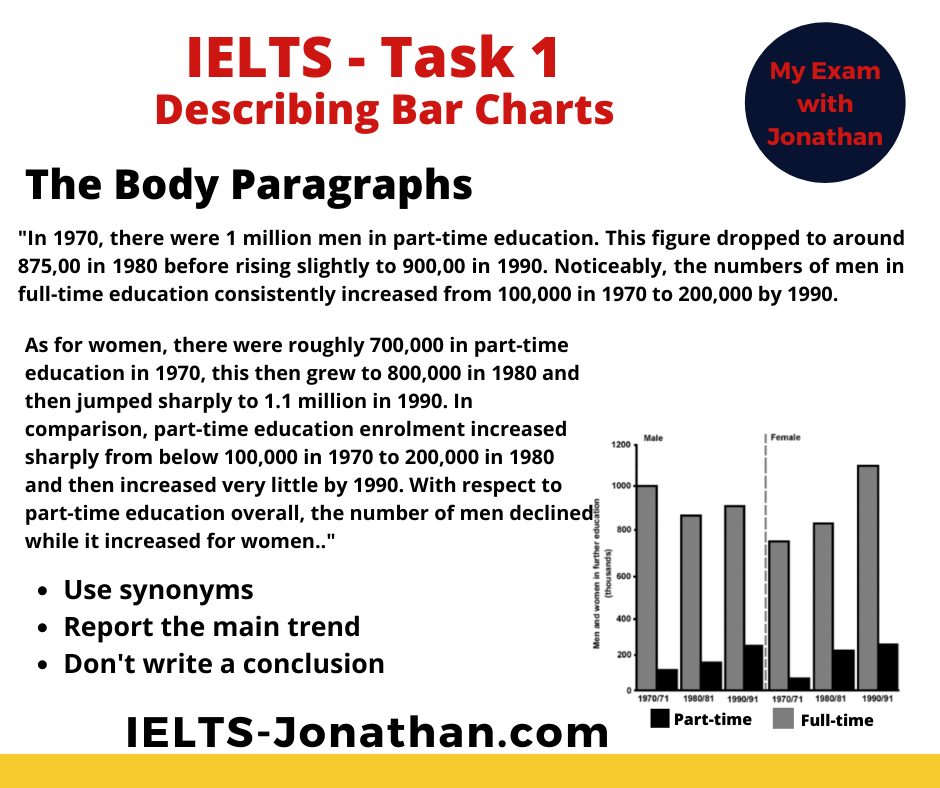


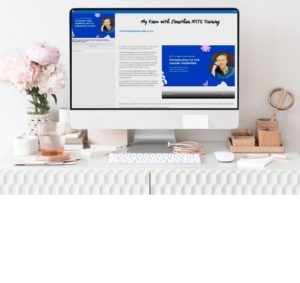
Was this helpful? Leave a comment :)